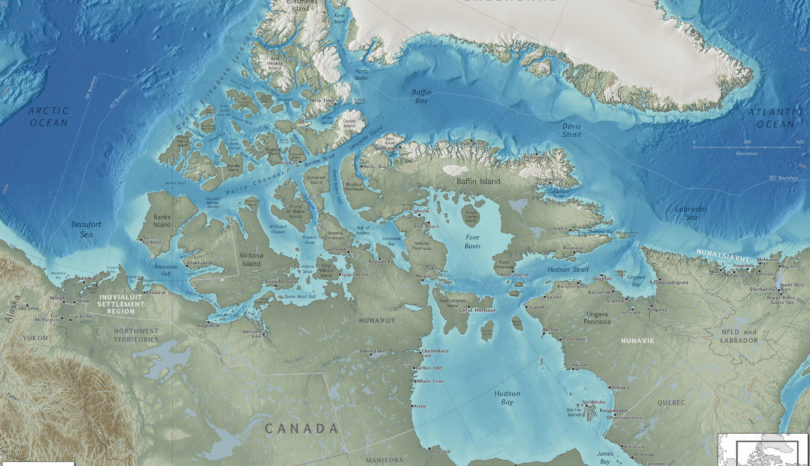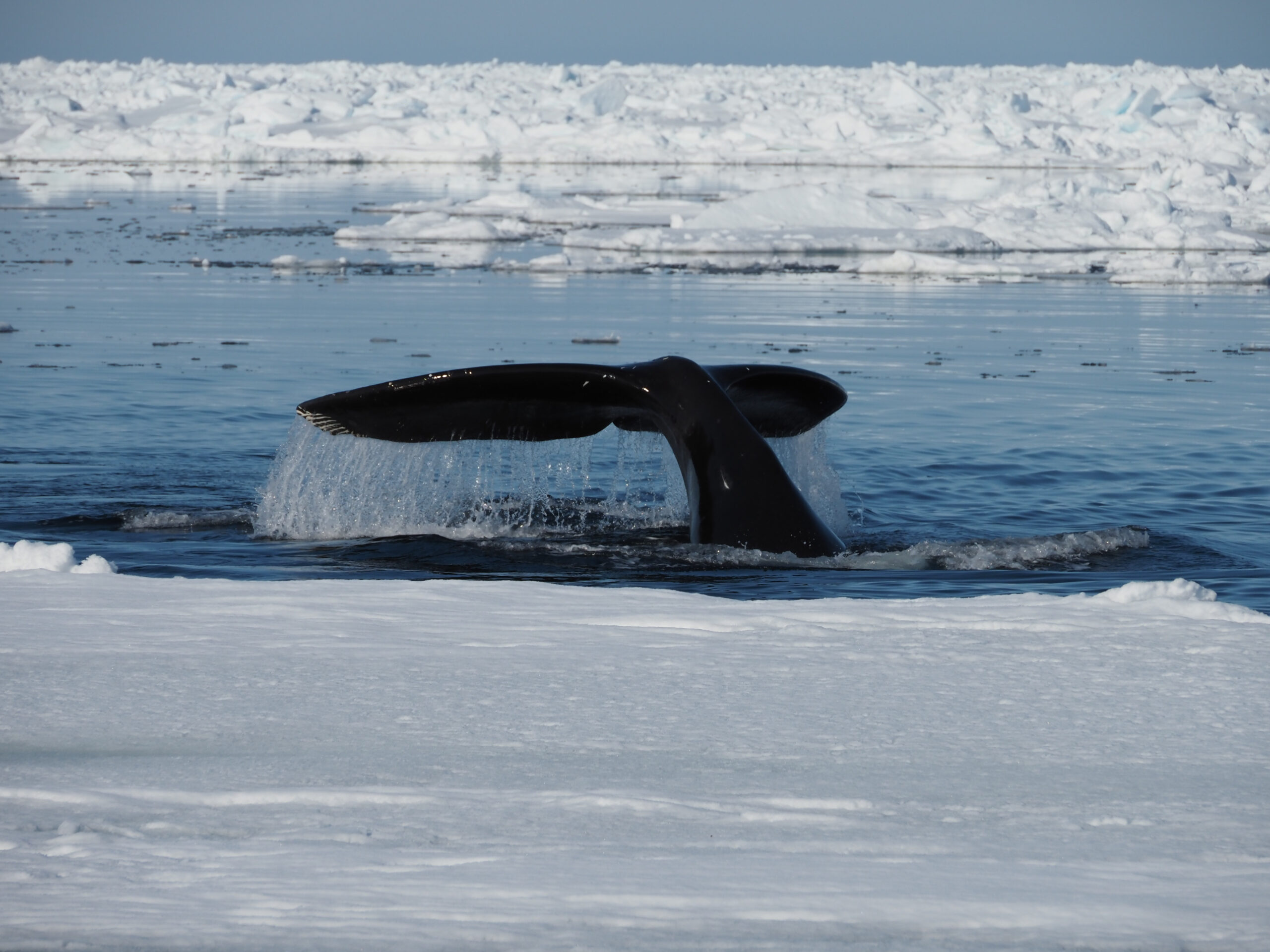Canada’s Arctic Marine Atlas, produced by Oceans North and its partners, provides an overview of the marine mammals, seabirds, fish and other wildlife that thrive in our northern waters – and highlights the importance of a healthy ecosystem for the people who live there.
An Introduction to the Arctic Marine Environment
Canada’s Arctic Marine Atlas, published jointly with Ducks Unlimited Canada and World Wildlife Fund Canada, offers a comprehensive look at an environment undergoing dramatic shifts due to climate change.
Relying on the latest data, the atlas describes the ecology of this region, from physical oceanography to biology, within the context of humans’ interaction with the natural world.
Flip through the atlas:
The following sections provide previews of each chapter of the atlas.
A Changing Climate
The dramatic loss of the Arctic’s sea ice is one of the most visible signs of how climate change is affecting the North. It threatens iconic species like Walrus and Beluga Whales that depend on ice and cold, forcing adaptations and attracting new predators to the region.
At the same time, warmer temperatures are restructuring the Arctic food web at every level, from the tiny phytoplankton that nourish Cod, to the Polar Bears that eat those fish. Conservation efforts can increase the resilience of Arctic ecosystems. A healthy marine environment is essential for Indigenous peoples who rely on marine mammals and fish for food security.
This Arctic Fishes Food Web shows the movement of energy through key Arctic marine and anadromous fish species and how each species is interconnected.
Credit: Oceans North
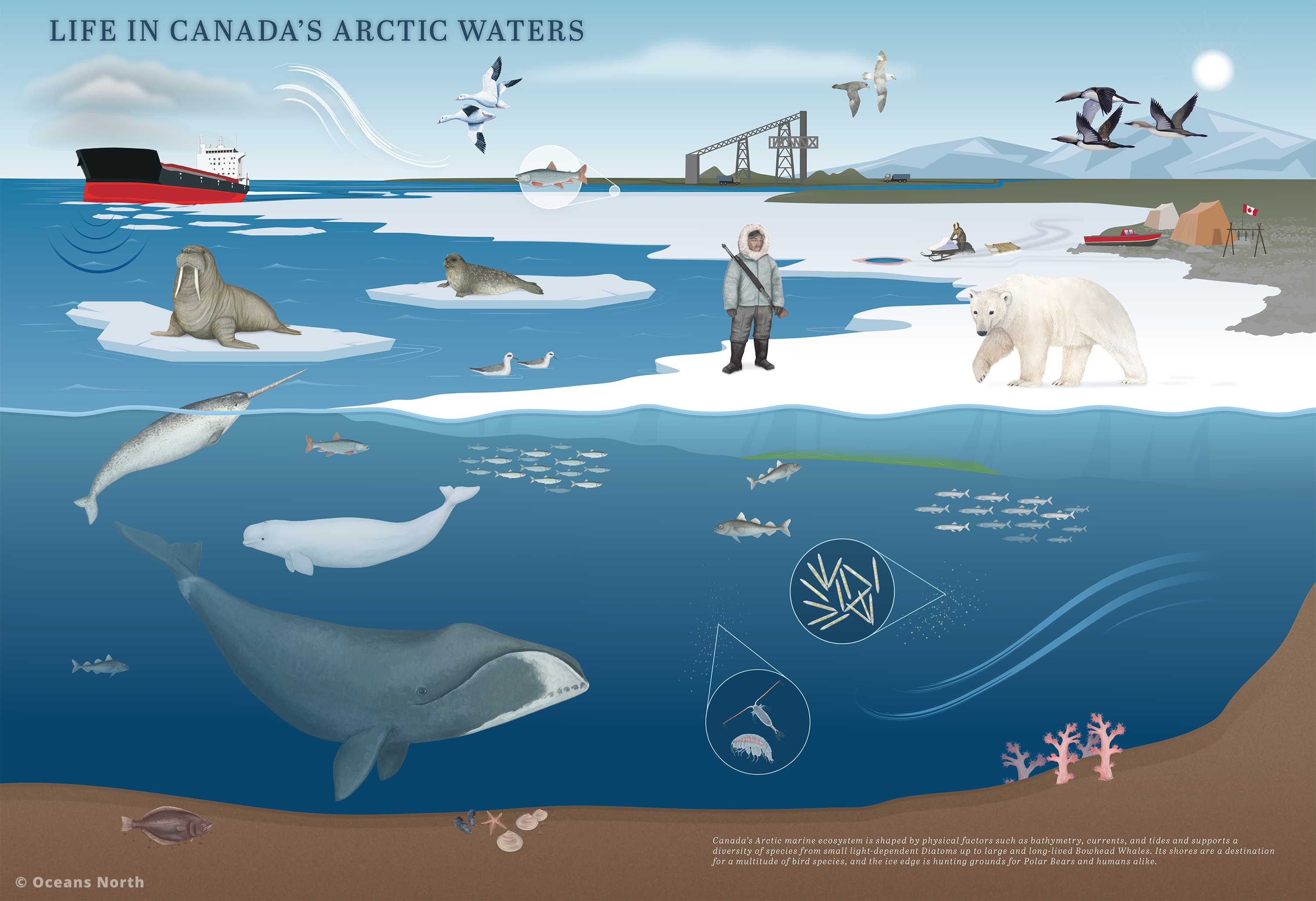
This Arctic Fishes Food Web shows the movement of energy through key Arctic marine and anadromous fish species and how each species is interconnected.
Credit: Oceans North
Humans and the Environment
Indigenous people make up eighty-five per cent of the 60,000 people that live in Canada’s coastal Arctic. Residents of this region, known as Inuit Nunangat, hunt, fish, and gather from land and sea. As a result of modern land claims, Indigenous peoples largely co-manage their local economies and natural resources. But as melting ice allows increased industrial access to the North, from shipping through the Northwest Passage to mining and oil development, conservation measures are needed to protect the marine ecosystem from further stress.
This is a map of Inuit Nunangat, the Inuit homeland in Canada.
Credit: Oceans North
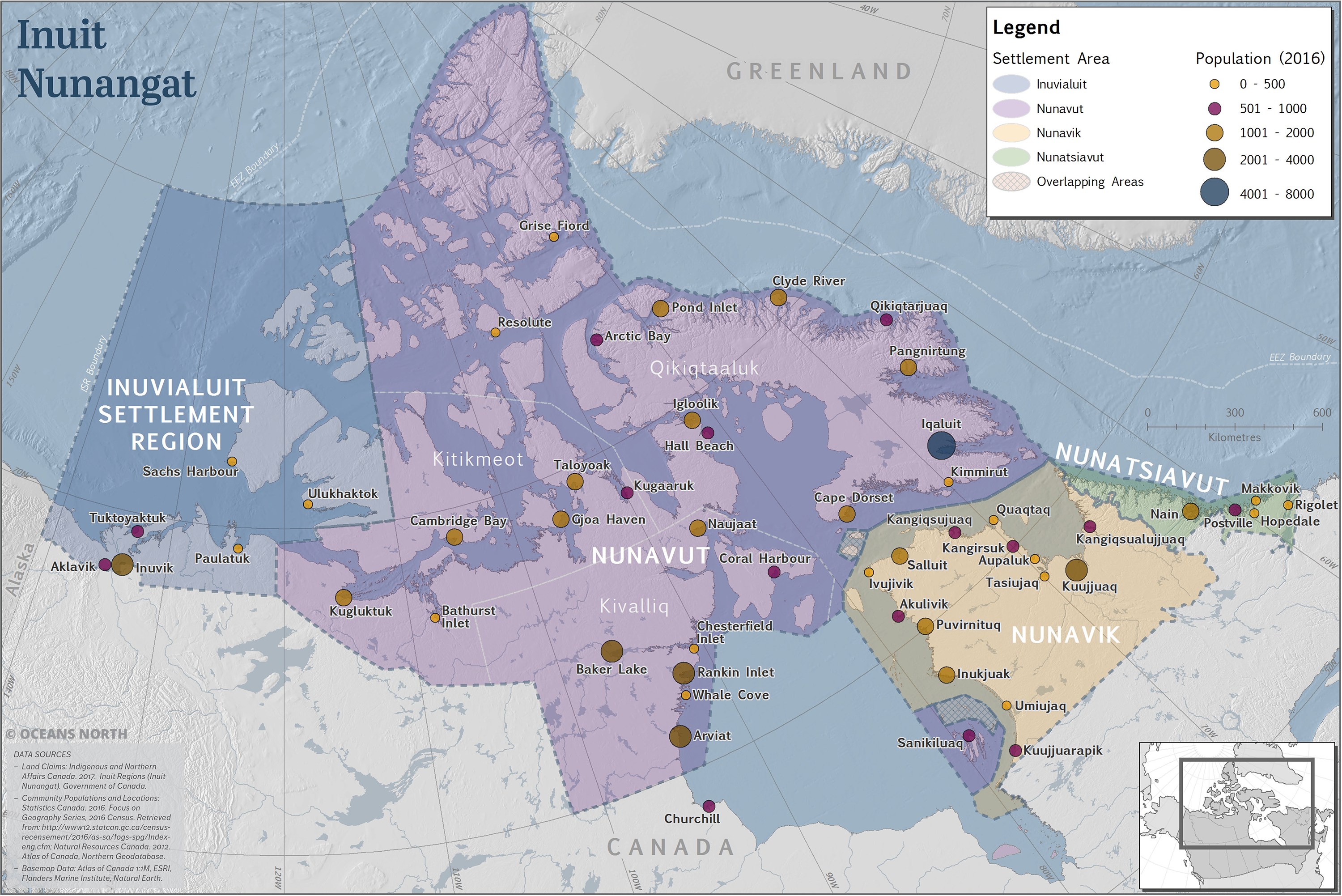
This is a map of Inuit Nunangat, the Inuit homeland in Canada.
Credit: Oceans North
A qamutik used to transport people and goods.
Credit: Trevor Taylor
A qamutik used to transport people and goods.
Credit: Trevor Taylor
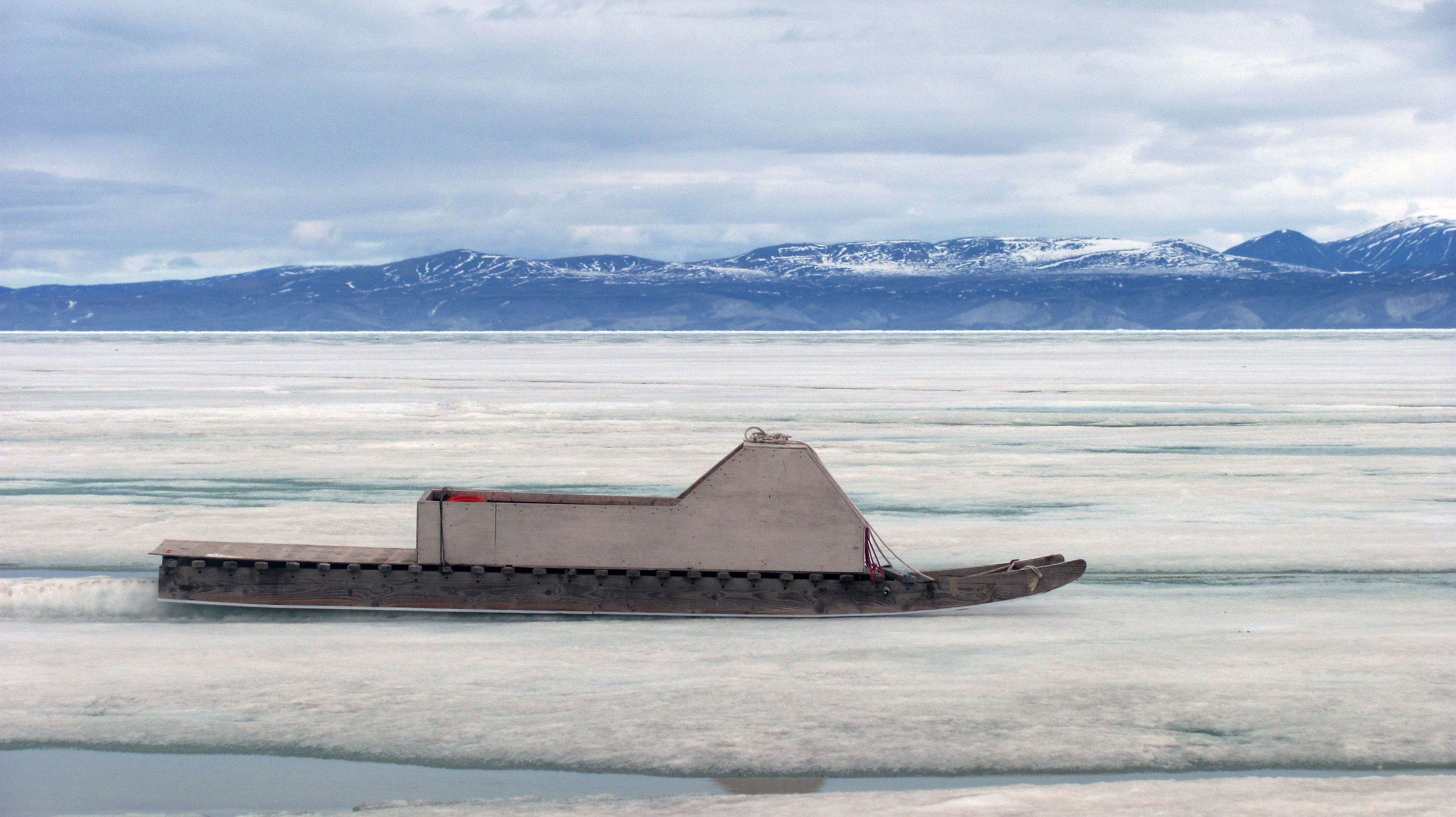
Physical Oceanography
The Arctic Ocean provides habitat for marine life, from mammals to fish to micro-organisms at the bottom of the food web. Many physical factors affect this ecosystem, including water temperature, salinity, depth, currents, tides, the presence or absence of ice, seabed geology and topography. This section describes these influences and why they matter.
This is a map of Canada’s Arctic seabed landscape based on data from the General Bathymetric Chart of the Oceans (GEBCO).
Credit: Oceans North
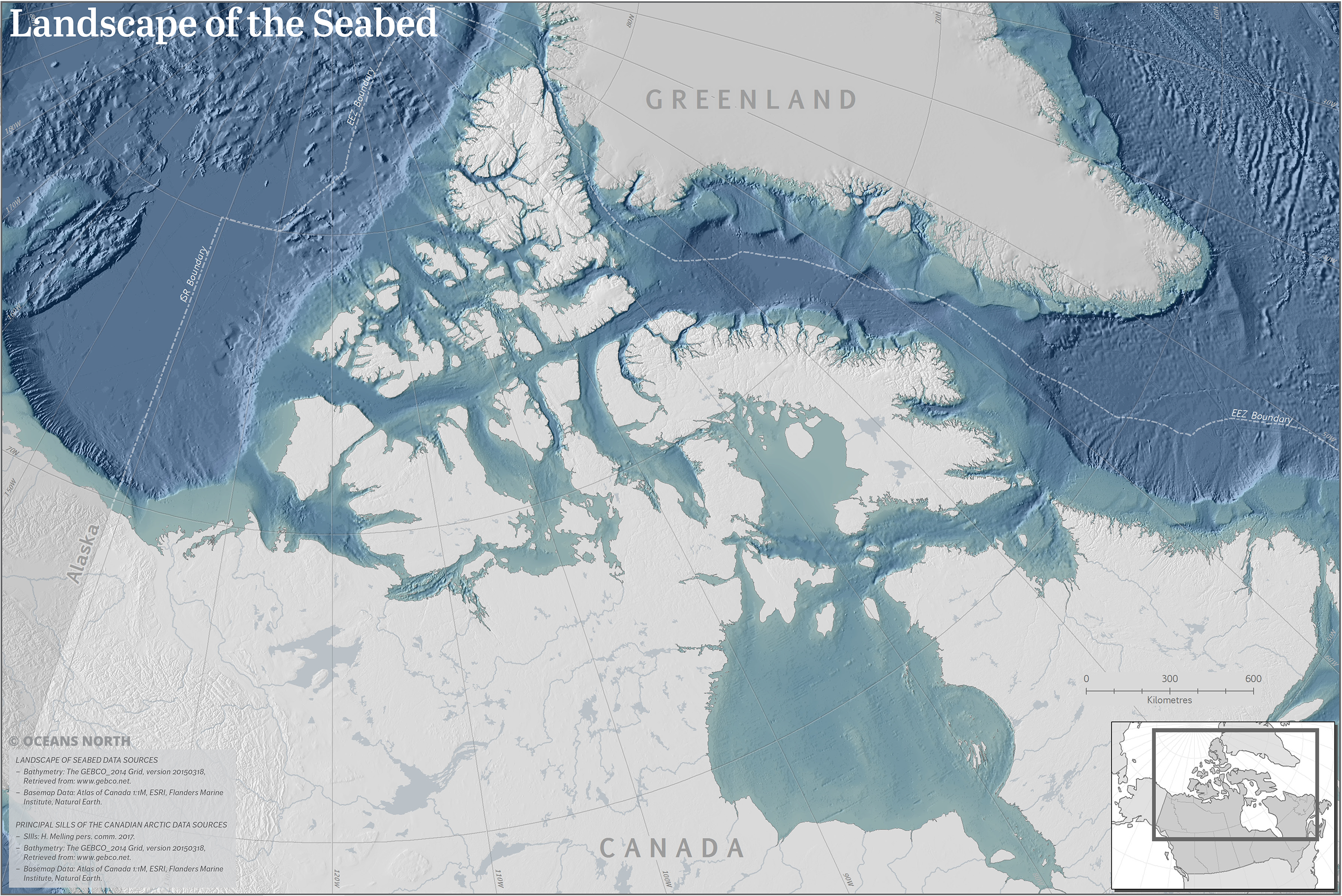
This is a map of Canada’s Arctic seabed landscape based on data from the General Bathymetric Chart of the Oceans (GEBCO).
Credit: Oceans North
Bottom of the Food Web
The species that comprise the base of the marine food web and create important seafloor habitat include phytoplankton, zooplankton, sponges, hard corals, soft corals and sea pens. All of them play important roles in biological productivity. As the Arctic warms, these species are vulnerable to harm from temperature shifts, ocean acidification and nutrient runoff from land and commercial bottom-fishing.
This series of maps shows the monthly average chlorophyll-a concentrations in the Canadian Arctic based on satellite imagery. Data Source: NASA SeaWiFS Ocean Color Data, 2016
Credit: Oceans North
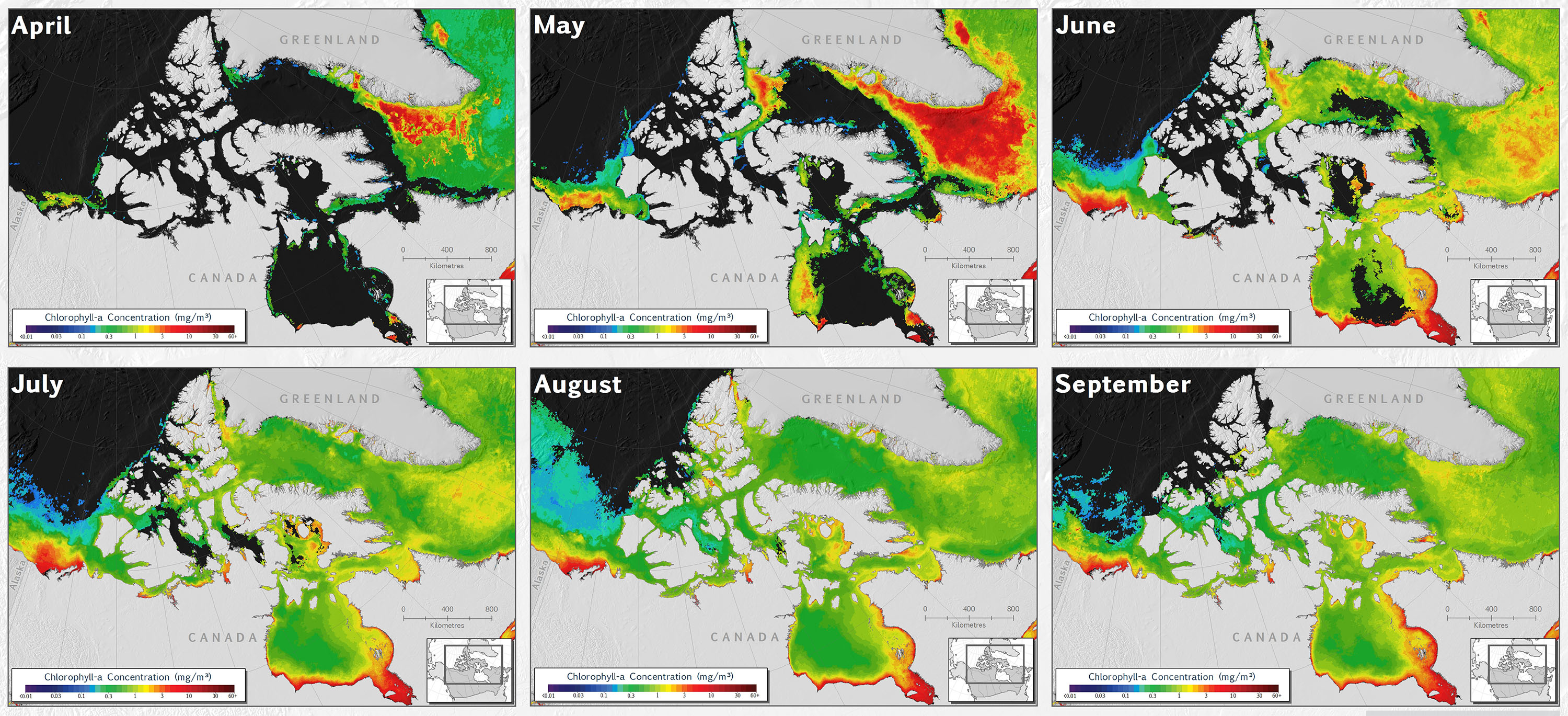
This series of maps shows the monthly average chlorophyll-a concentrations in the Canadian Arctic based on satellite imagery. Data Source: NASA SeaWiFS Ocean Color Data, 2016
Credit: Oceans North
Phytoplankton is the foundation of the ocean’s food chain.
Credit: NOAA MESA Project
Phytoplankton is the foundation of the ocean’s food chain.
Credit: NOAA MESA Project
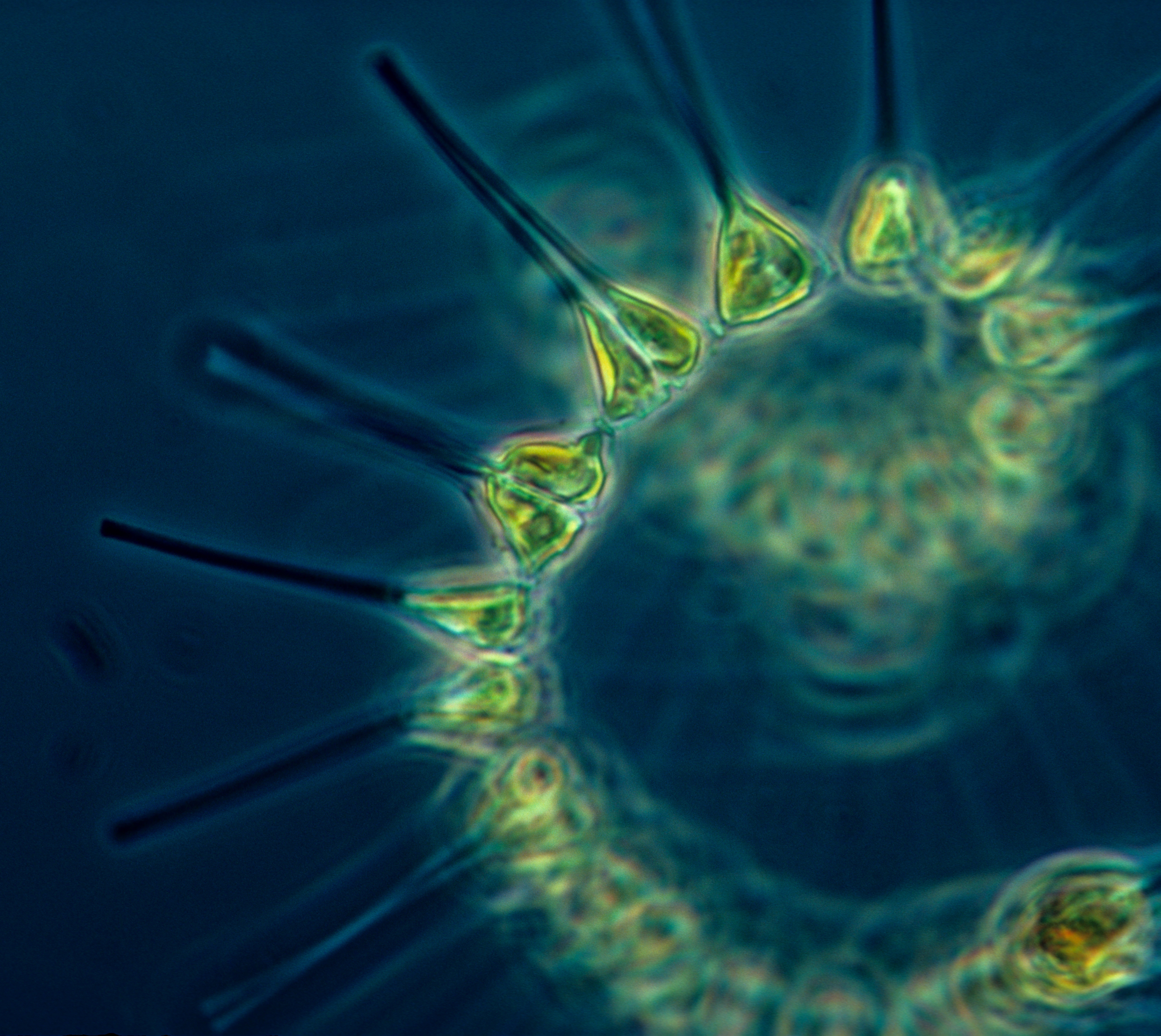
Marine and Anadromous Fishes of the Arctic
Canada’s Arctic waters are home to 222 fish species, including 20 that are anadromous, or swim between fresh water and salt water. Fish are an important source of food for birds and mammals. Inuit communities rely on fish for subsistence diets and fisheries. But the loss of sea ice and warmer waters are changing the marine habitat, providing access to industrial fisheries and increasing the importance of fisheries management plans.
This map shows the distribution of capelin in the Canadian Arctic, including points where capelin have been sampled. Areas without points reflect a lack of data not necessarily an absence of this species.
Credit: Oceans North
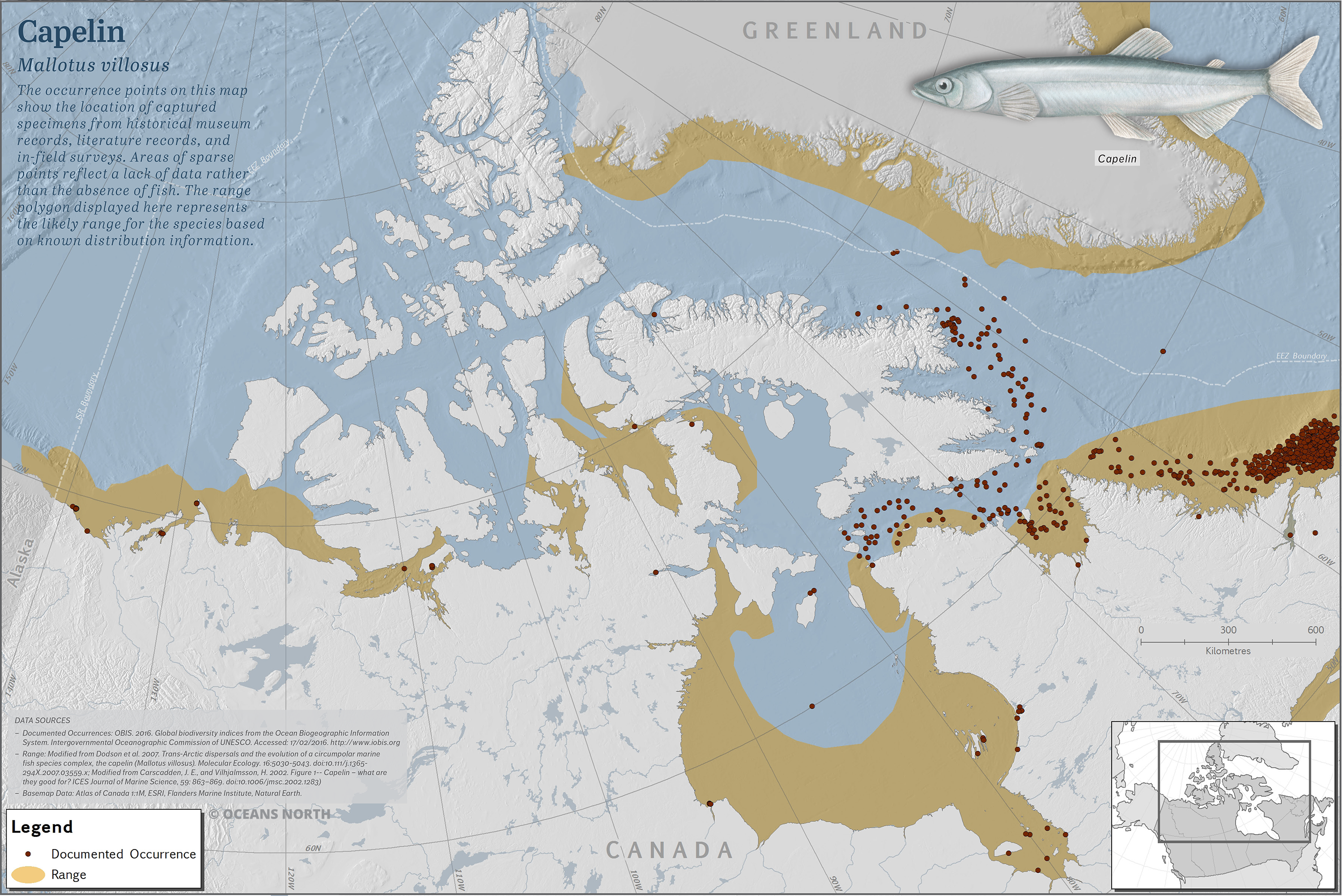
This map shows the distribution of capelin in the Canadian Arctic, including points where capelin have been sampled. Areas without points reflect a lack of data not necessarily an absence of this species.
Credit: Oceans North
Sea ice is important habitat for juvenile Arctic Cod, providing access to food (such as sea algae) and protection from predators.
Credit: Peter Leopold
Sea ice is important habitat for juvenile Arctic Cod, providing access to food (such as sea algae) and protection from predators.
Credit: Peter Leopold
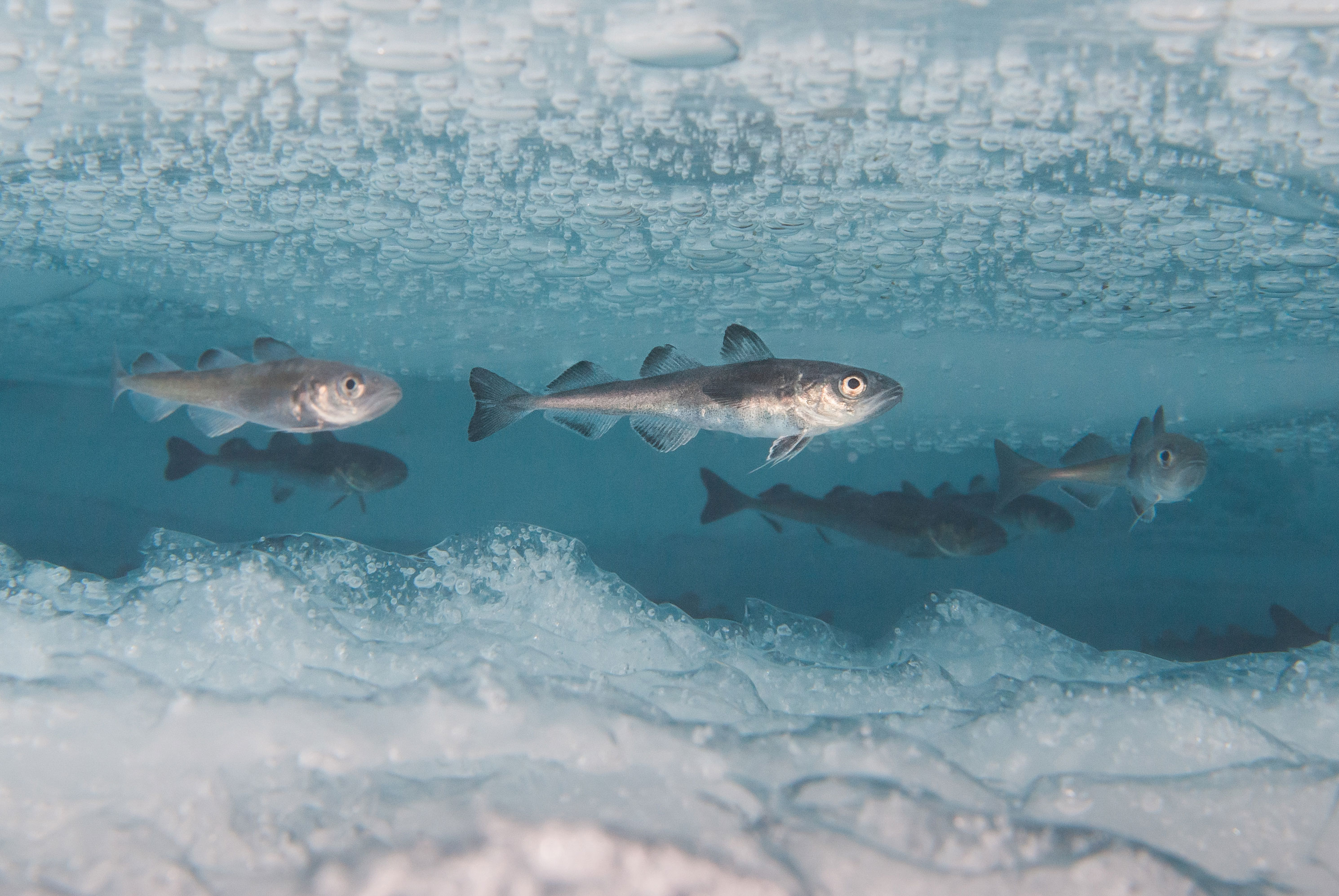
This graphic shows the different elements that make up life in Canada’s Arctic waters, from tiny phytoplankton to large bowhead whale to those who depend on the waters for hunting and harvesting.
Credit: Oceans North
This graphic shows the different elements that make up life in Canada’s Arctic waters, from tiny phytoplankton to large bowhead whale to those who depend on the waters for hunting and harvesting.
Credit: Oceans North
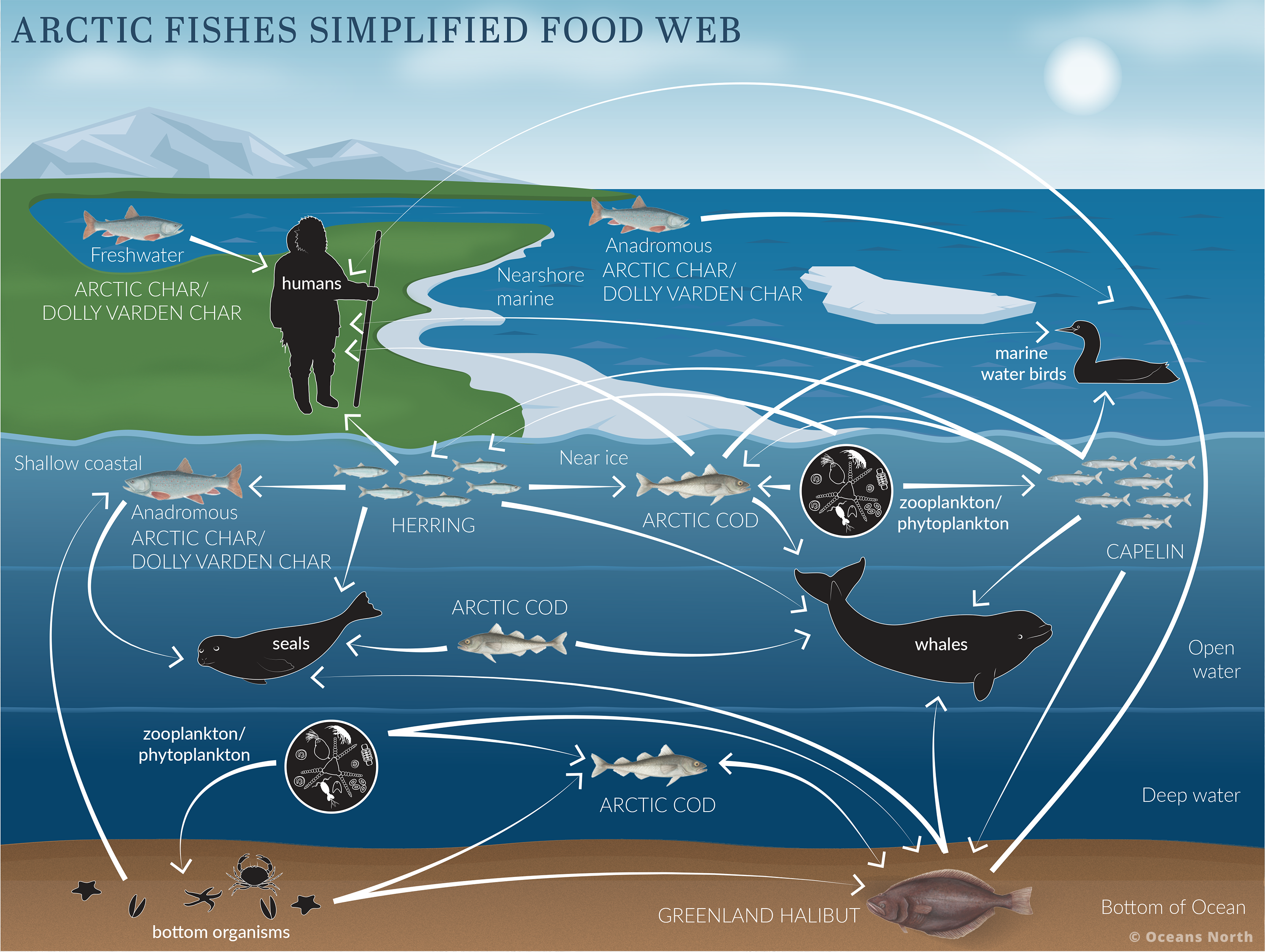
Coastal and Marine Birds of the Arctic
Marine birds are an indicator of the health of Arctic marine ecosystems, reflecting shifts in the food web, prey distribution and the accumulation of contaminants. They are of cultural significance to Indigenous peoples and are an important part of a subsistence diet. But climate change is threatening Arctic-breeding birds by contributing to a loss of habitat and ocean acidification, as well as allowing increased predation, causing more extreme weather patterns and opening the region to commercial activities that create pollution.
This map shows Key Habitat Sites and Important Bird Areas in the Canadian Arctic.
Credit: Oceans North
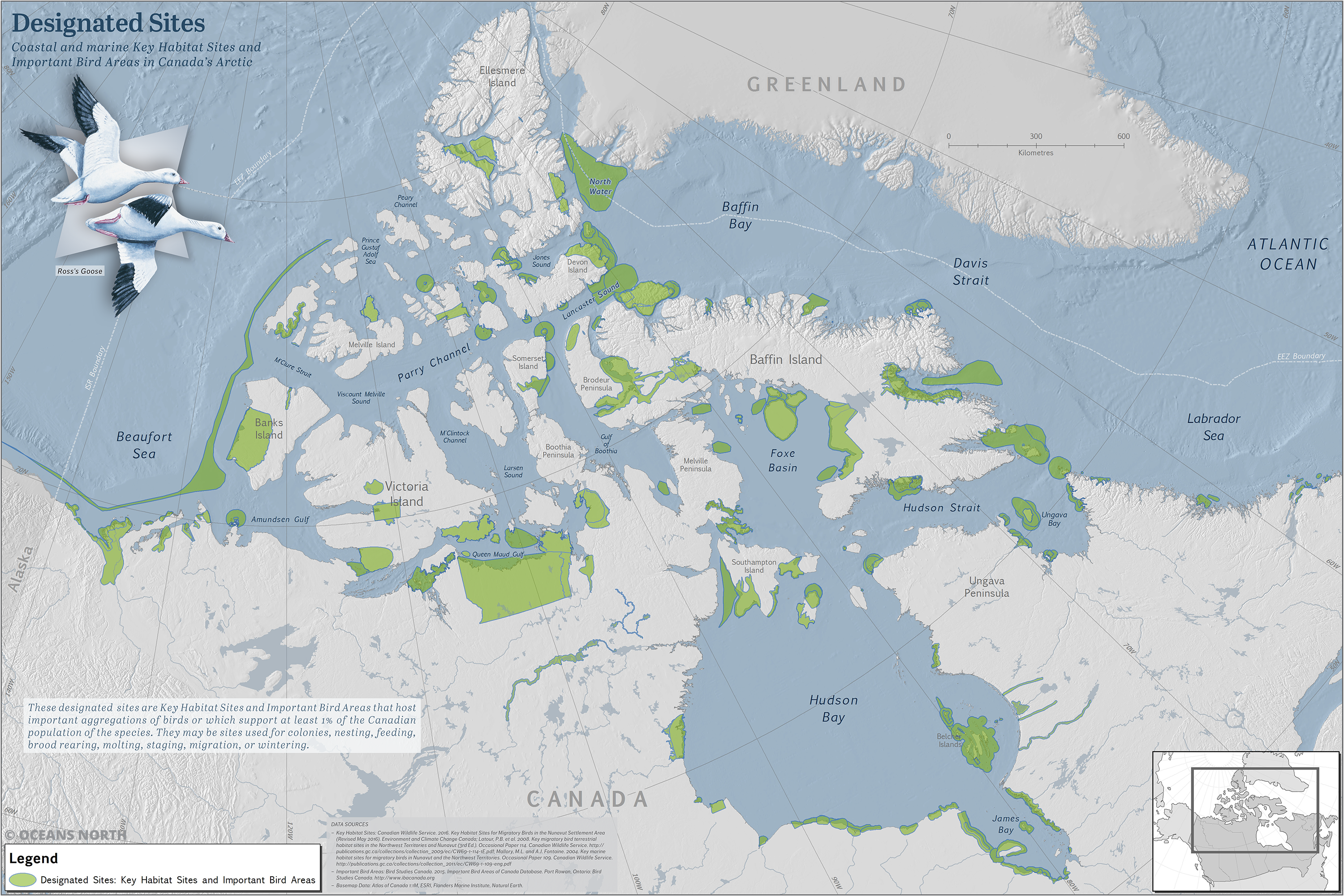
This map shows Key Habitat Sites and Important Bird Areas in the Canadian Arctic.
Credit: Oceans North
Ivory Gull flies along the floe edge.
Ivory Gull flies along the floe edge.
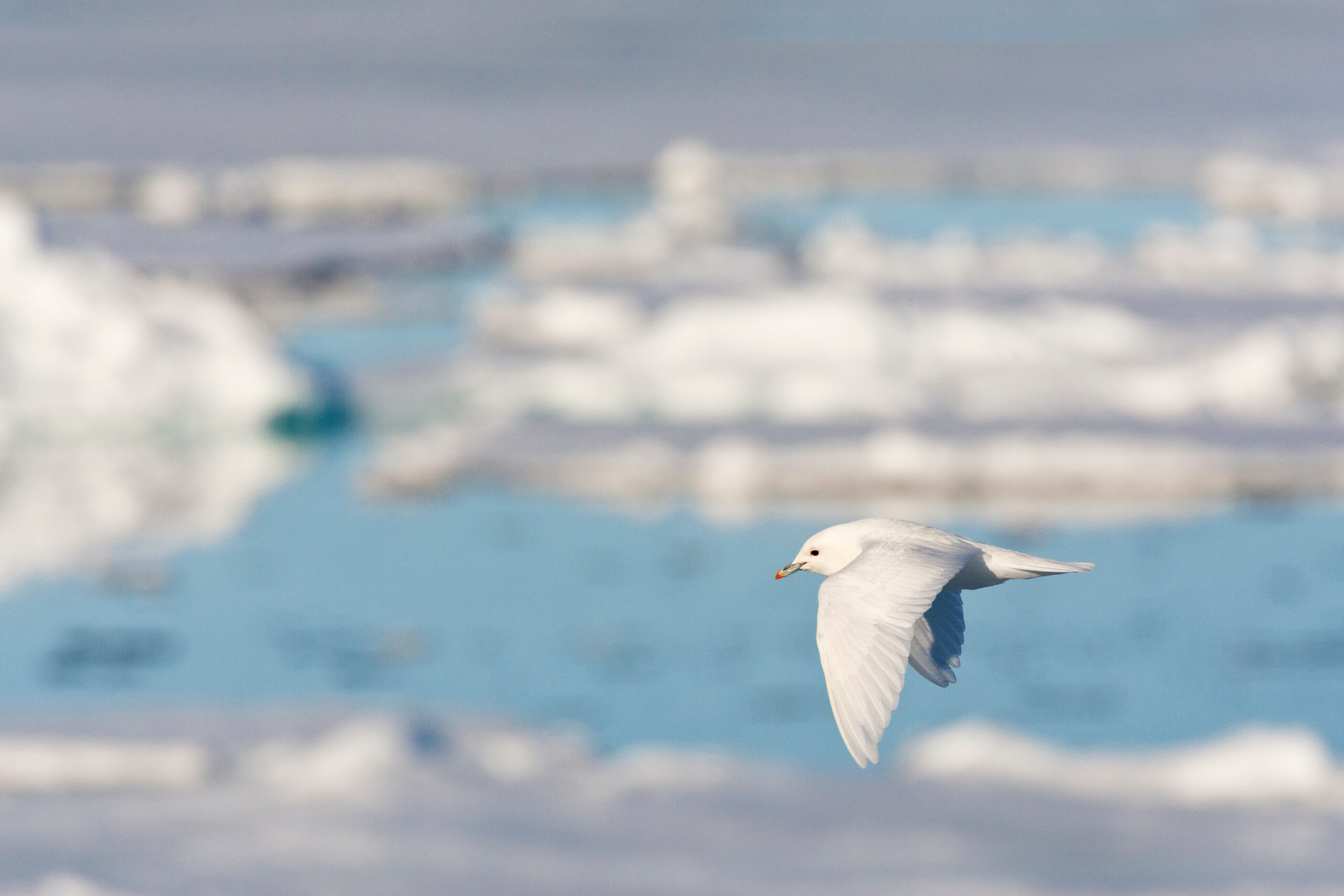
Marine Mammals of the Arctic
The Canadian Arctic’s 21 species of marine mammals play a major role at every level of the food chain, from feeding as top predators on other marine mammals and fish, to consuming creatures as tiny as copepods. Harvested in all seasons, marine mammals are an important part of subsistence diets and hold great cultural significance to Indigenous peoples. But the loss of sea ice has reduced their habitat and introduced new threats, from noise pollution to oil spills to ship strikes and other disturbances.
This map shows areas where marine mammals, including Bowhead whales, Narhwal, Walrus and Ringed Seals are found in high concentrations.
Credit: Oceans North
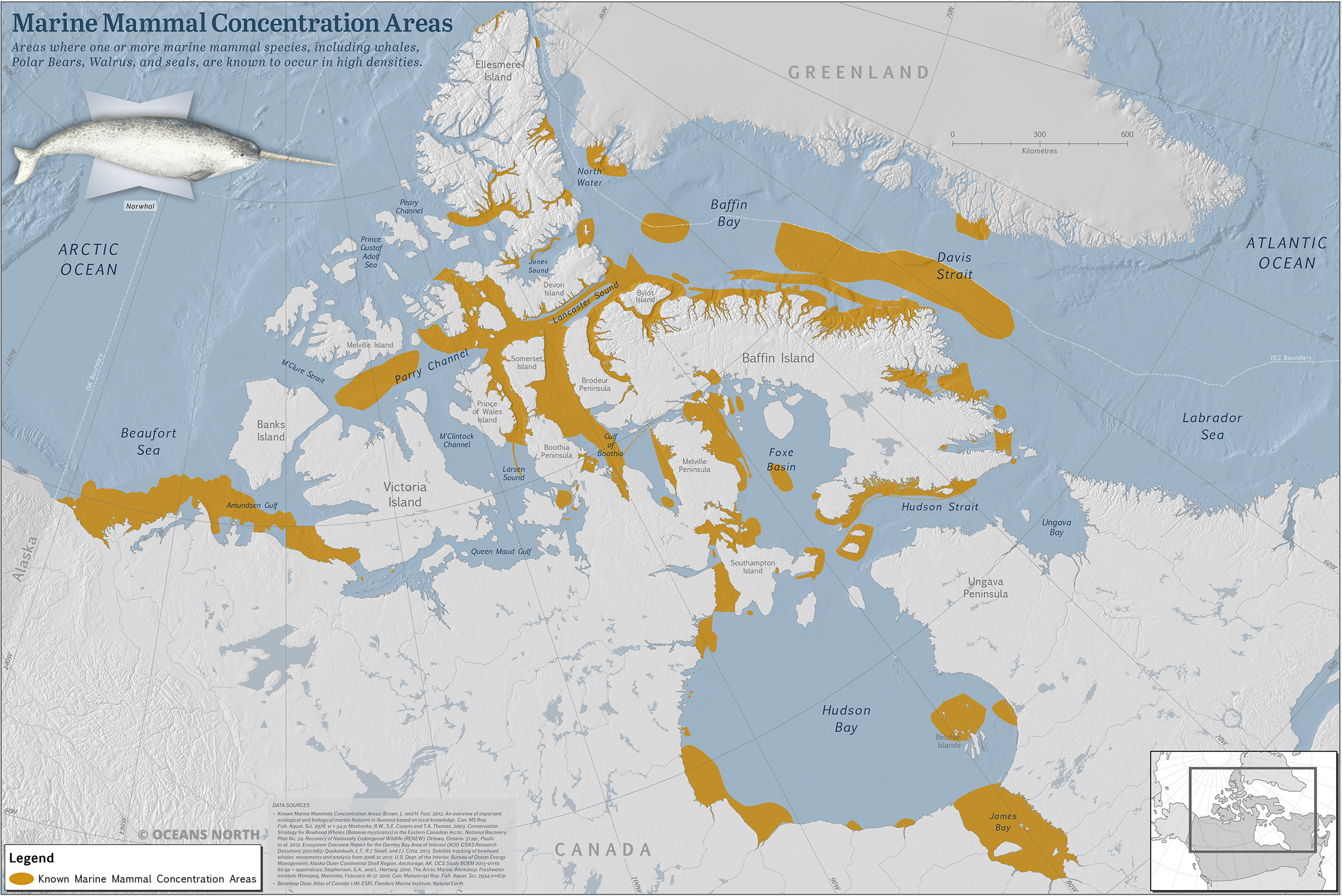
This map shows areas where marine mammals, including Bowhead whales, Narhwal, Walrus and Ringed Seals are found in high concentrations.
Credit: Oceans North
This Arctic Marine Mammals Food Web shows the movement of energy through key marine mammal species and how each species is interconnected.
Credit: Oceans North
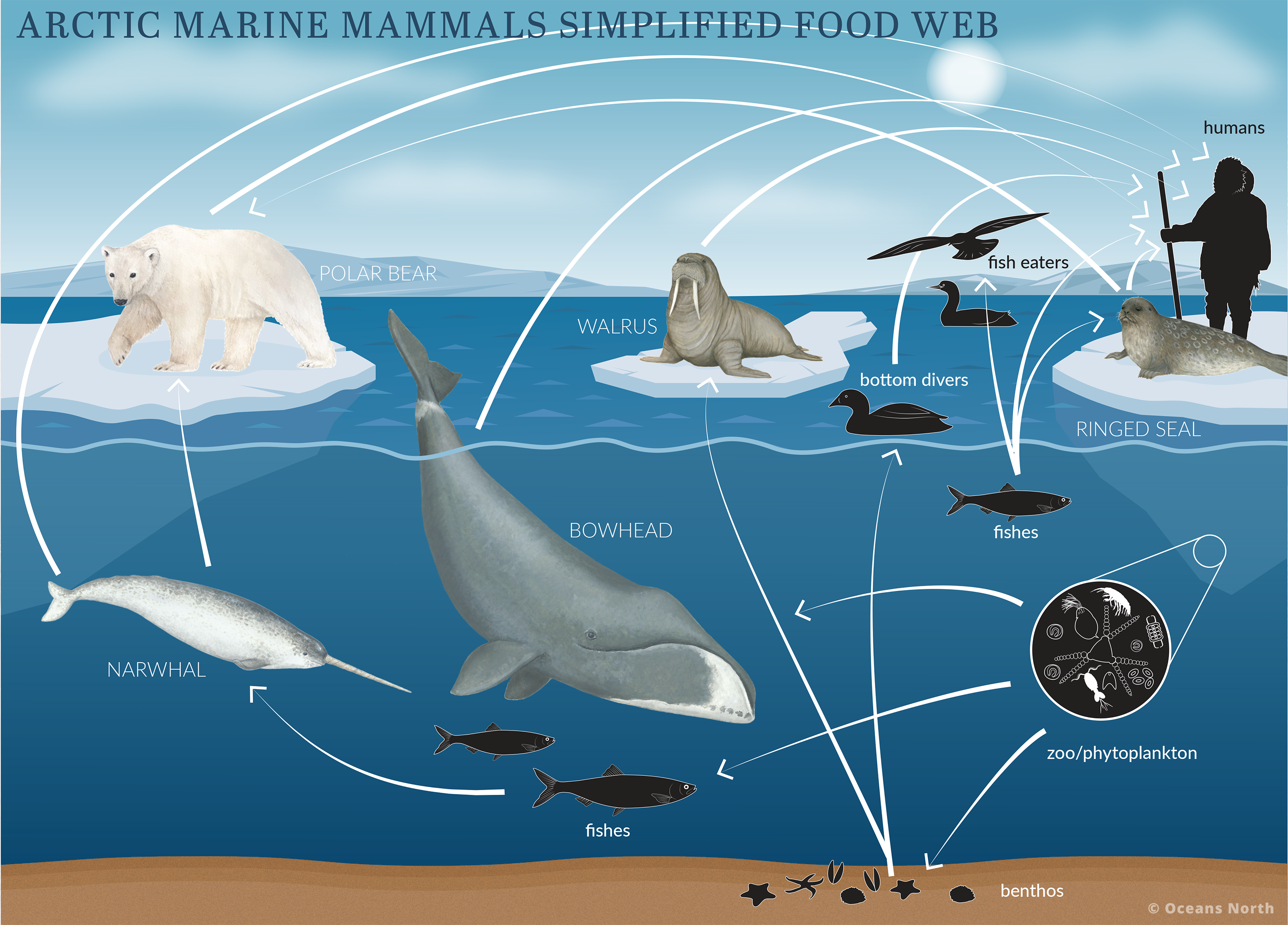
This Arctic Marine Mammals Food Web shows the movement of energy through key marine mammal species and how each species is interconnected.
Credit: Oceans North
A Resource for All
Oceans North hopes Canada’s Arctic Marine Atlas will be a useful resource and encourage initiatives that help protect the natural bounty of this region for future generations.
Find out more about the atlas in our press release and blog post.
View a PDF of the complete atlas »

